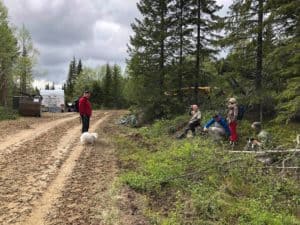Norway's Environment Protection Association warns against further degradation of topsoil.
Football stadiums, warehouses and motorways are several measures that both in the past and present threaten our valuable arable soil. Norway is not currently self-sufficient in important products such as grain and vegetables. The war in Ukraine makes the situation worse. In the future, Norway cannot expect future imports of grain and vegetables from abroad. At the same time, we are in a situation where areas with topsoil are under pressure for development from several quarters. The world may face a famine in the future and then all nations must have available land for the production of food.
The Norwegian Environment Protection Association demands a complete permanent halt to the reduction of topsoil.
Recently, the Norwegian Environmental Protection Association wrote consultation opinion on Bodø Glimt's plans to establish a new football stadium on the old agricultural land on Rønvikjordene in Bodø.
In recent years it has been promoted several development cases throughout the country where agricultural land and topsoil have been proposed to be developed. This piecemeal policy has meant that Norway has lost large areas of arable land.

The agricultural area in Norway only makes up about 3 percent of the land area, and only a third of this is suitable for growing food grains. Many of our most productive areas are located in, or adjacent to, rapidly growing urban areas.
Norway has little arable land as a result the country's topography with many mountains and fjords. Areas for the cultivation of grain are also the lowest in Europe.
Given that Ukraine, Europe's granary, is affected by war. The consequence is that the export of grain from Ukraine is now reduced to a minimum with the consequences this has for the food situation in a number of countries, including Norway.
According to Minister of Agriculture Sandra Borch the proportion of available topsoil in Norway has decreased over the past 20 years. Norway is currently not self-sufficient in either grain or vegetables should a crisis situation arise. Norway is dependent on all the topsoil that is left in the country.
The Storting passed last year a new, national soil conservation strategy with a tightened soil conservation target.
A maximum of 3,000 acres of cultivated land can be reallocated per year. The goal must be reached by 2025.
From 2015 to 2020, an average of 1,650 acres of cultivated land was reallocated annually just for transport purposes.
The Norwegian Directorate of Agriculture has recently halted the demolition of 15 acres of fully cultivated land in Rissa in Trøndelag. Very good!
The question is whether the directorate manages to capture all the cases in the country.
The Environmental Protection Association encourages all members and other interested parties to report cases where the topsoil is in danger of being degraded, large or small. It is very important to get into matters as quickly as possible.
The Norwegian Environment Protection Association demands a complete permanent halt to the reduction of topsoil.






